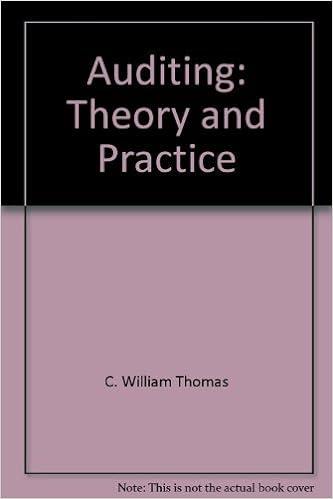Question
Analytical procedures are a crucial element of the auditing process, because they comprise of financial data assessments based on an examination of possible connections between
Analytical procedures are a crucial element of the auditing process, because they comprise of financial data assessments based on an examination of possible connections between financial as well as non-financial data. Analytical procedures are used for the following purposes: To assist the auditor in planning the nature, timing, and extent of other auditing procedures. As a substantive test to obtain evidential matter about particular assertions related to account balances or classes of transactions. Analytical techniques could be convenient and powerful assessments for assertions where possible misstatements will not be obvious from a comprehensive review or if extensive information is not easily obtainable. Comparing total wages paid with both the numbers of employees, for instance, could reveal illegal payments which aren't visible when checking customer accounts. By comparing financial data from different periods or to industry benchmarks, auditors can identify areas where there may be potential problems, such as declining sales, increasing debt, or shrinking profit margins. This information can then be used to focus further audit procedures on the areas of greatest risk
There are different types of ratios that can be used in this case. Solvency Ratios include financial reports which are computed to assess an entity's economic problem in perspective of long-term solvency. Those ratios measure a company's capacity to fulfill long-term commitments but are regularly monitored by shareholders to comprehend and recognize the company's capacity to meet long-term commitments and to aid them in establishing long - term investing choices. Activity ratios measure how efficiently a company is using its assets. These ratios include the inventory turnover ratio, the days sales outstanding ratio, and the asset turnover ratio. Profitability ratios measure how profitable a company is. These ratios include the gross profit margin, the operating profit margin, and the net profit margin.
By carefully analyzing these and other ratios, auditors can identify potential problems that could threaten a company's ability to continue as a going concern. This information can then be used to plan and execute the audit in a way that will help to protect the interests of the company's stakeholders.
Step by Step Solution
There are 3 Steps involved in it
Step: 1

Get Instant Access to Expert-Tailored Solutions
See step-by-step solutions with expert insights and AI powered tools for academic success
Step: 2

Step: 3

Ace Your Homework with AI
Get the answers you need in no time with our AI-driven, step-by-step assistance
Get Started


